
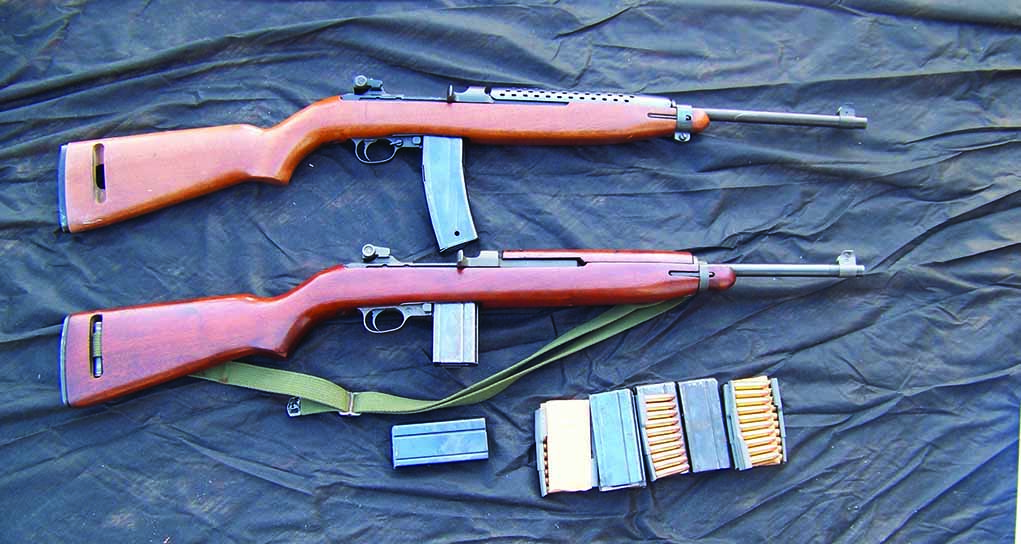
Often dismal as issued, there are a host of options to accurized the M1 Carbine and get the little rifle to sing.
Areas Of the M1 Carbine To Work On:
Among the most popular of all World War II firearms is the U.S. MI Carbine. In my opinion, there is no more enjoyable recreational shooter. Light, handy, light kicking, and very reliable, the Carbine has much to recommend.
M1 Carbine Goes To War
The Carbine was not designed as a battle weapon, but rather as a PDW, or personal defense weapon. Of course, in 1940, that term hadn’t yet been coined, but it was the gun’s purpose, intended to give soldiers behind the lines a weapon light enough to be with them at all times. Tank crewmen, truck drivers, ammo bearers, and officers had previously been armed with a handgun. The idea was to give the troops a service weapon superior to the handgun, but not as heavy and difficult to manage as the M1 Garand. Winchester succeeded admirably, with the introduction of its .30 Carbine.
The M1 Carbine was a traditionally designed rifle in some ways. It featured the typical short stock, with much of the barrel exposed, same as the Springfield and Krag carbines. But the M1 Carbine featured a modern gas-operated action, and, as it featured a 15-round magazine, soldiers were provided a considerable reserve.
.30 Carbine Ammo
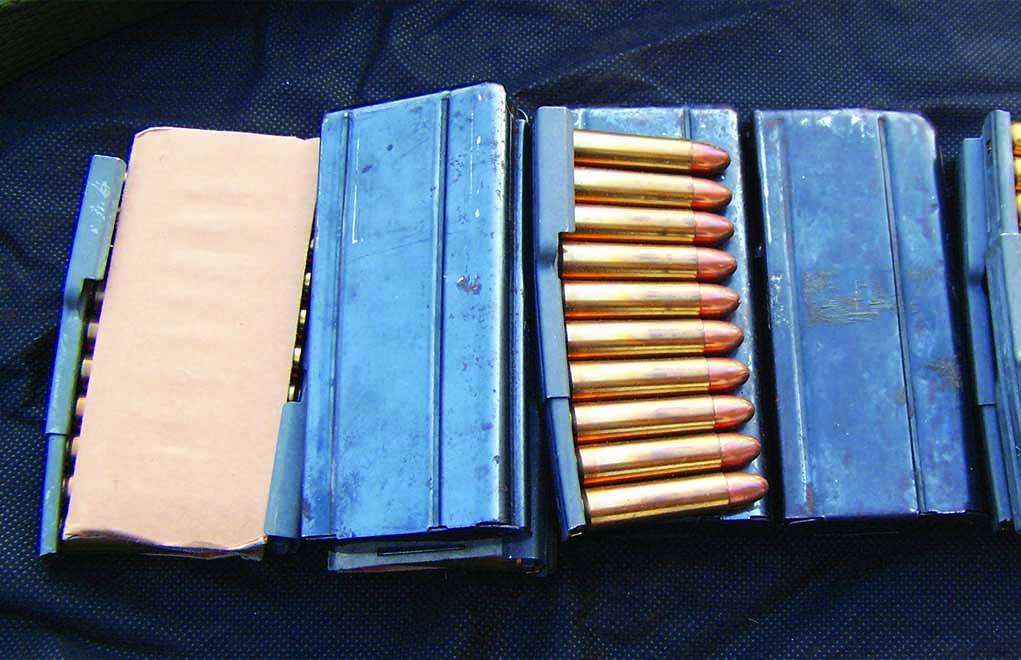
The cartridge was often the subject of discussion. The new round was not a full-power rifle round, but a unique, straight-walled cartridge that has sometimes been compared to magnum-class handgun rounds; it jolts a 110-grain jacketed bullet to a little over 1900 feet per second. The view of this by some was that it did not generate sufficient velocity for effective use past 200 yards—and some say the limit is just 100. Too, the bullet did not break at the cannelure as some bullets will, which means it basically pushed a .30 hole through the target. While criticisms as to the knockdown power of the Carbine are valid and it proved to be a somewhat ineffective battle rifle, in the end, the Carbine, was a wonderful PDW weapon.
Rough Around The Edges
This brings me to another shortcoming of the M1 Carbine, right behind the power deficit of its ammunition. Truthfully, the Carbine is a bit rough around the edges when it comes to accuracy. Another well-known military rifle, the AK 47, suffers from much the same problem, but while the AK is what it is, the Carbine may be helped, and the advantage gained is often worth the effort.
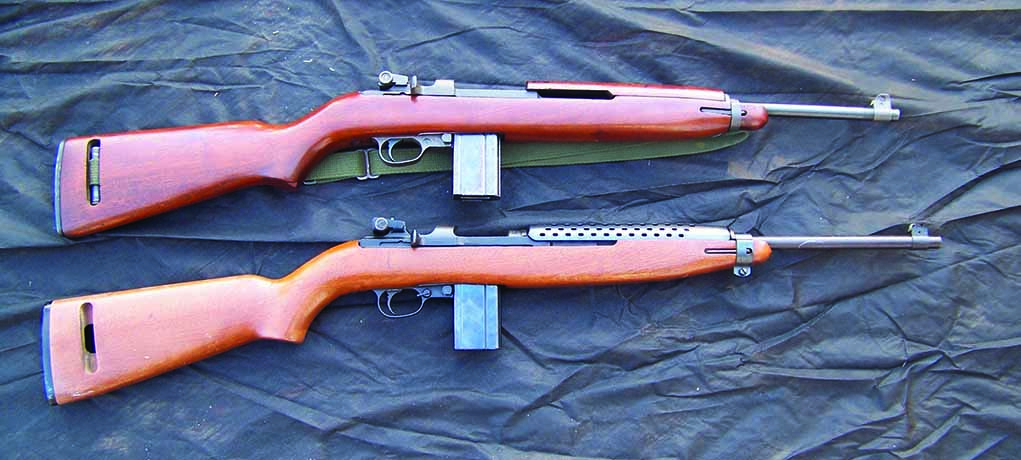
I have fired my Carbines with South Korean military ammunition, jacketed loads from the major makers, and the newer CorBon DPX loading. While the custom-grade CorBon loading is the most accurate, it is so only by a small margin. A pretty decent M1 Carbine will give you a five-shot group measuring about five inches at 100 yards. An exceptional rifle will go three inches or a little more. For hitting a coyote at 35 yards, the Carbine excels. For long-range work, well, let’s hope your aspirations are recreational. As for ammunition, I am certain there are handloaded combinations that must be more accurate than factory ammunition, but I handload primarily for economy, not for precision. I have tried the proven combinations, and while they are often more accurate than factory loads, it is not by any great margin.
Recently, I elected to tighten up my Carbines as best I could. I have become interested in the Carbines, due to the introduction of the exceptional new CorBon DPX load. Locating the Plainfield at a fair price at a pawn shop was a prompting to me, too, so there we go. The work was straightforward and produced good results, all we can ask.
First things first, you need to know what you’re looking at to begin with. The rifle fieldstrips easily; the locking rat-tail tang at the rear of the receiver and the barrel band are all that hold the rifle together. (Such straightforward assembly works without complaint, but this system isn’t a solid base for accuracy.) Take a look at the rear receiver tang, which engages the recoil plate that is in the stock. If the fit is good when assembled and there is a need to depress the barrel into the stock when fitting the barrel band, then you may have a more accurate rifle. If, on the other hand, the recoil plate fit is loose, the rifle is likely inaccurate.
Rise Your Military Firearms IQ:
- M1 Garand: America’s Original Battle Rifle
- M1 Garand Ammo: What Should You Shoot in Your M1?
- Browning Automatic Rifle: The Gun That Changed the Infantry
- Gunsmithing: Bring The M1917 Back To Life
- M1917 Enfield: The Unofficial U.S. Service Rifle
Recoil Plate
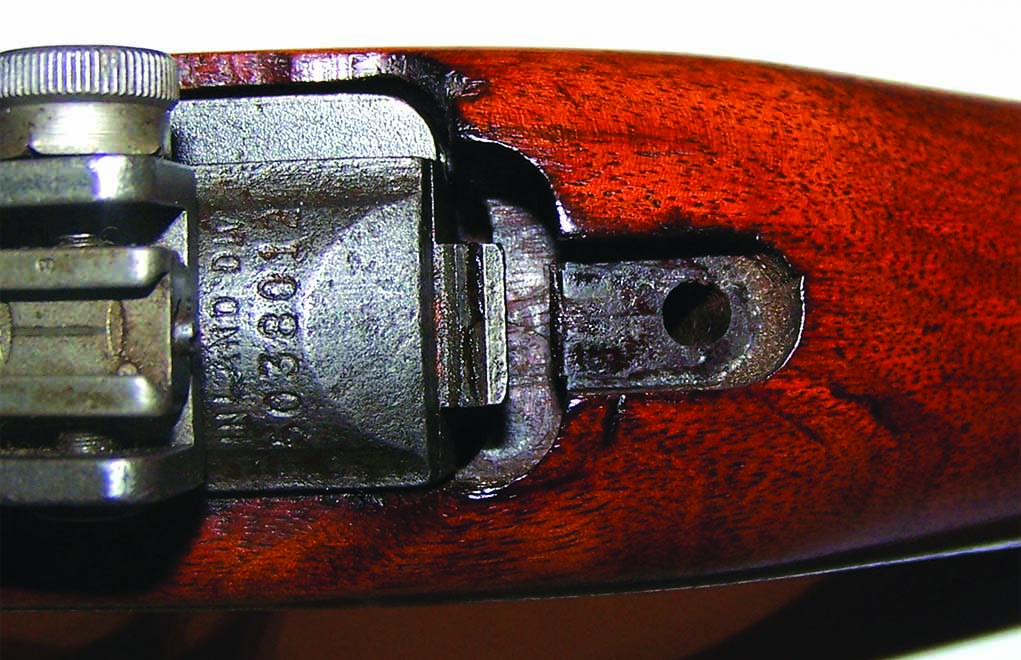
The are several means of tightening up the M1 Carbine that are worth a look. First and simplest is to simply tighten the screw holding the recoil plate to the stock. Admittedly, if this is loose, poor accuracy may not be noticeable at close range, but the looser groupings will be noticeable at 100 yards. It is easier to tighten the recoil plate effectively if the recoil plate is fully fitted into the stock. A method I am familiar with from the by-God-and-by-gosh school is to take the recoil plate out and peen it, a tooling maneuver that involves hitting the part until it is longer and therefore produces a tighter friction fit.
Stock
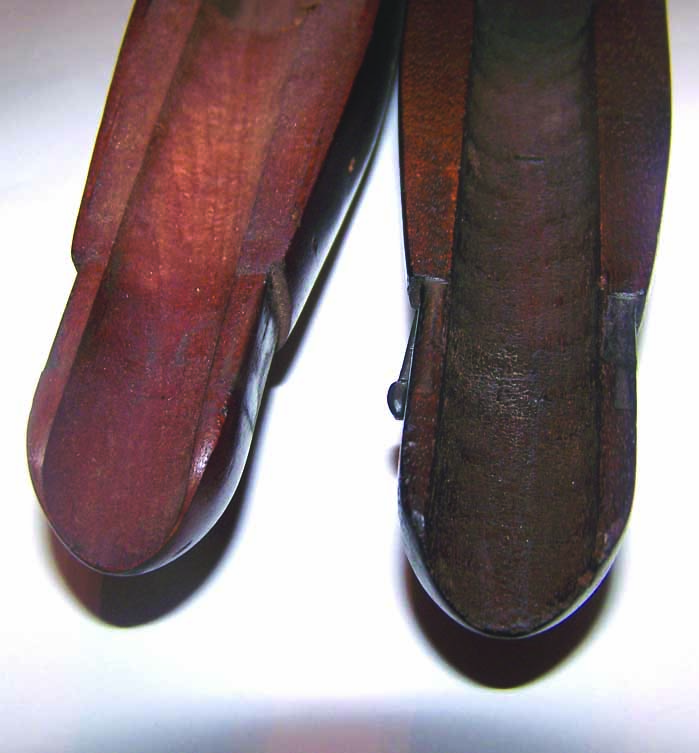
Next, you should examine the stock itself. Remember, the M1 Carbine is primarily a triumph of mass production. It has been produced by the millions and always works, but accuracy was always second to its reliability. (Yeah, the more we look at it, the M1 can almost be called the “American AK!”) Take a look at the stock and be certain it fits the Carbine well. Route out the mortise in the stock that holds the recoil plate if necessary until the barrel, with the rifle assembled, floats about a half inch above the channel in the stock. A few shavings off the back of the stock usually results in a greater effect at the barrel end. Take care and frequently drop the barreled action back into the stock to check your progress.
Barrel Bands
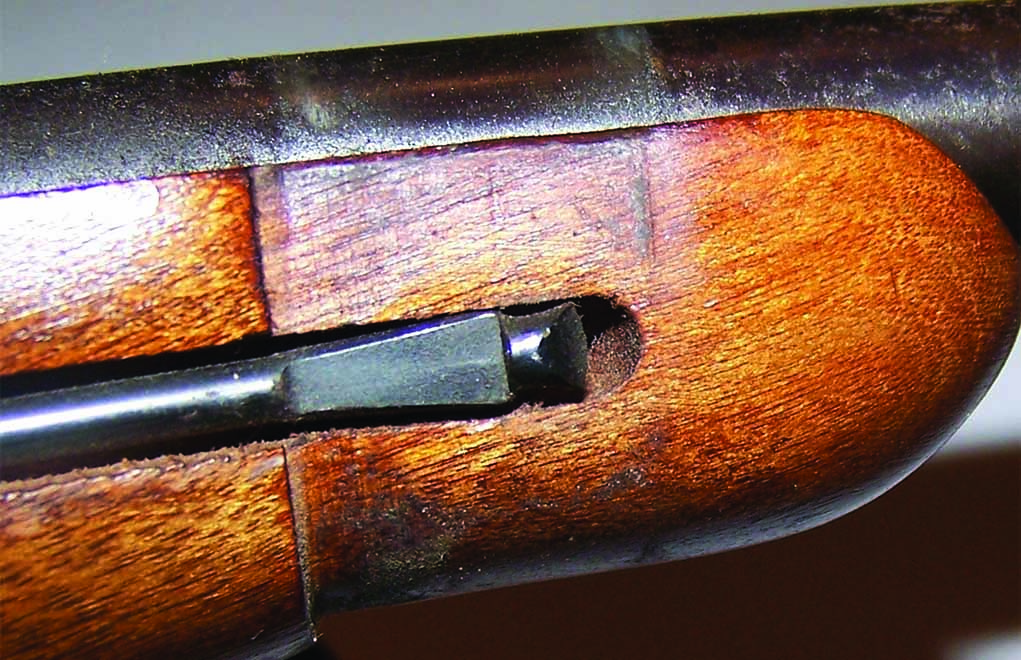
Barrel bands are a fertile field for accuracy experiments. There are several types, and I will not pretend to be an expert, but the narrow half-inch bands seem to be the worst for accuracy. They often mismatch the stock and simply do not get the job done. The alternate types that are an inch thick are much betting at snugging up. The best type of barrel band by all reports seems to be the bayonet lug type, but this design is a bit difficult to find. If this band design interests you, check with Fulton Armory first, then the pages of Shotgun News. You will probably be able to obtain decent accuracy with the standard barrel band if you check the recoil plate mortise, but the superior wide bands do help. So, after working with the recoil plate and the recoil plate mortise, then making certain the barrel is flee floating as much as possible, you should be able to observe a difference in accuracy.
Barrel
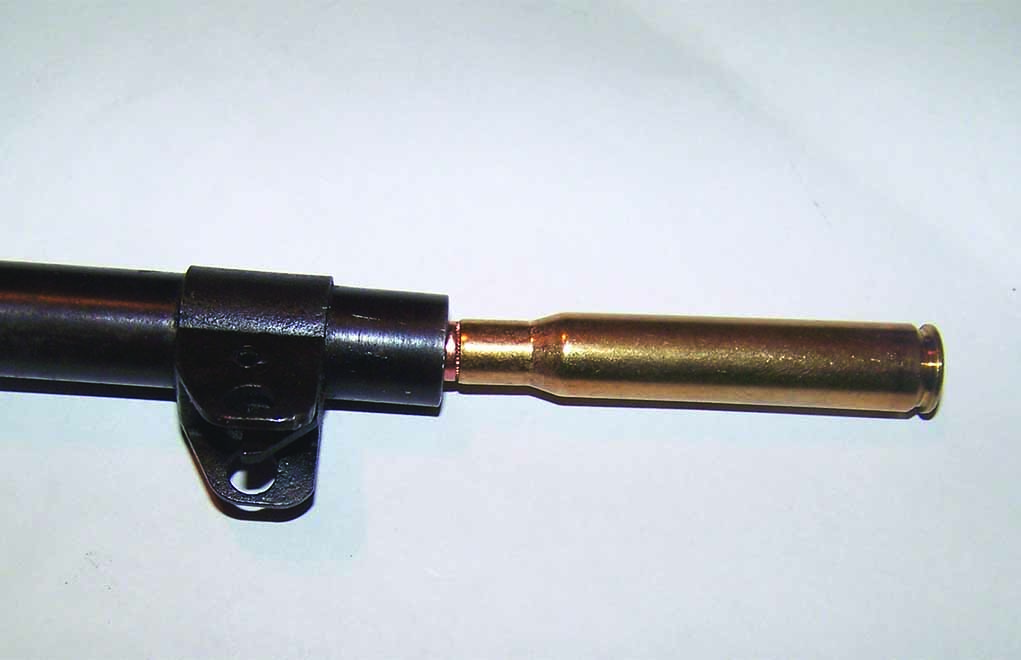
At this point, barrel wear is a question. The use of noncorrosive ammunition in the M1 Carbine is a great aid in barrel life. In fact, few Carbines will be found with rusty bores. But overaggressive cleaning has shortened the life of many Carbine bores. There are gauges available to test the muzzle to see just how much damage the GI bore cleaner has done, but a more simple test with a centerfire rifle cartridge is adequate for evaluation. Now, the .30 Carbine cartridge is too short to use as a gauge, so use a .308 Winchester or, better still, a .30-06 Springfield cartridge. With the Carbine checked to be certain it is unloaded and with the action locked back, attempt to fit the ball portion of the cartridge into the Carbine muzzle. If the bullet goes in up to the cartridge case mouth, your muzzle is pretty much shot out. If the bullet stops at insertion at about an eighth of an inch, you have a shooter—and in between these two will probably exhibit in-between accuracy. I admit the mechanical gauge is more scientific, but this simple test works well enough to get a preliminary grip on the potential your M1 Carbine might have.
Trigger
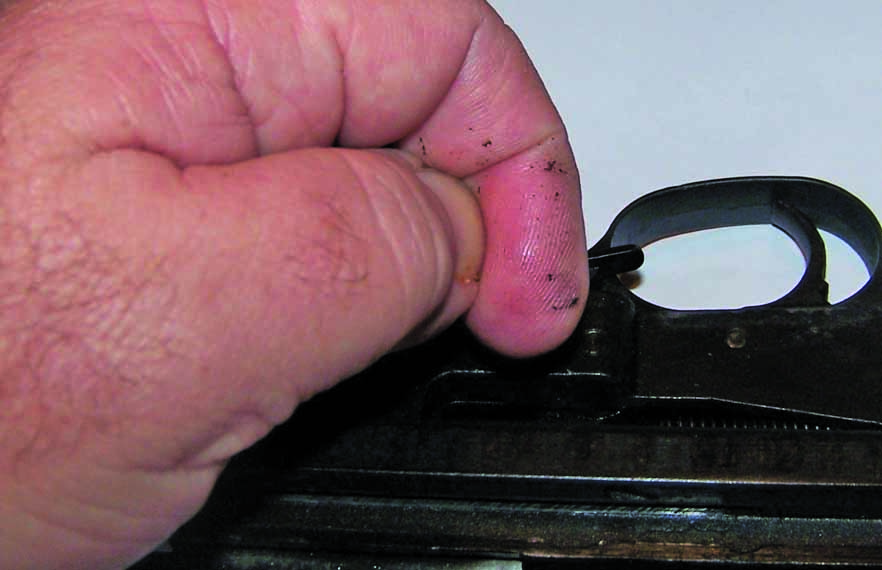
There is little point in addressing the trigger action. The military two-stage trigger usually breaks at 4.5 to 6 pounds. I would never attempt to file hardened parts to produce a clean break. In any case, those few competitions that specify the M1 Carbine also demand a 4.5 pound or heavier trigger action. What is beneficial is to carefully clean and lubricate the trigger action.
The .30-caliber M1 Carbine is a versatile little rifle. It is usually completely reliable, accurate enough for personal defense and pest popping, and, above all, it is user friendly. While not as inexpensive as it once was, the Carbine still remains an excellent addition to anyone’s tactical repertoire. This is a design with no flies on it.
Editor's Note: This article originally appeared in the Gun Digest 2013.

Next Step: Get your FREE Printable Target Pack
Enhance your shooting precision with our 62 MOA Targets, perfect for rifles and handguns. Crafted in collaboration with Storm Tactical for accuracy and versatility.
Subscribe to the Gun Digest email newsletter and get your downloadable target pack sent straight to your inbox. Stay updated with the latest firearms info in the industry.

![Best Concealed Carry Guns In 2025 [Field Tested] Wilson Combat EDC X9S 1](https://gundigest.com/wp-content/uploads/Wilson-Combat-EDC-X9S-1-324x160.jpg)


![Best 9mm Carbine: Affordable PCCs [Tested] Ruger Carbine Shooting](https://gundigest.com/wp-content/uploads/Ruger-Carbine-Shooting-100x70.jpg)
![Best AR-15: Top Options Available Today [Field Tested] Harrington and Richardson PSA XM177E2 feature](https://gundigest.com/wp-content/uploads/Harrington-and-Richardson-PSA-XM177E2-feature-100x70.jpg)
